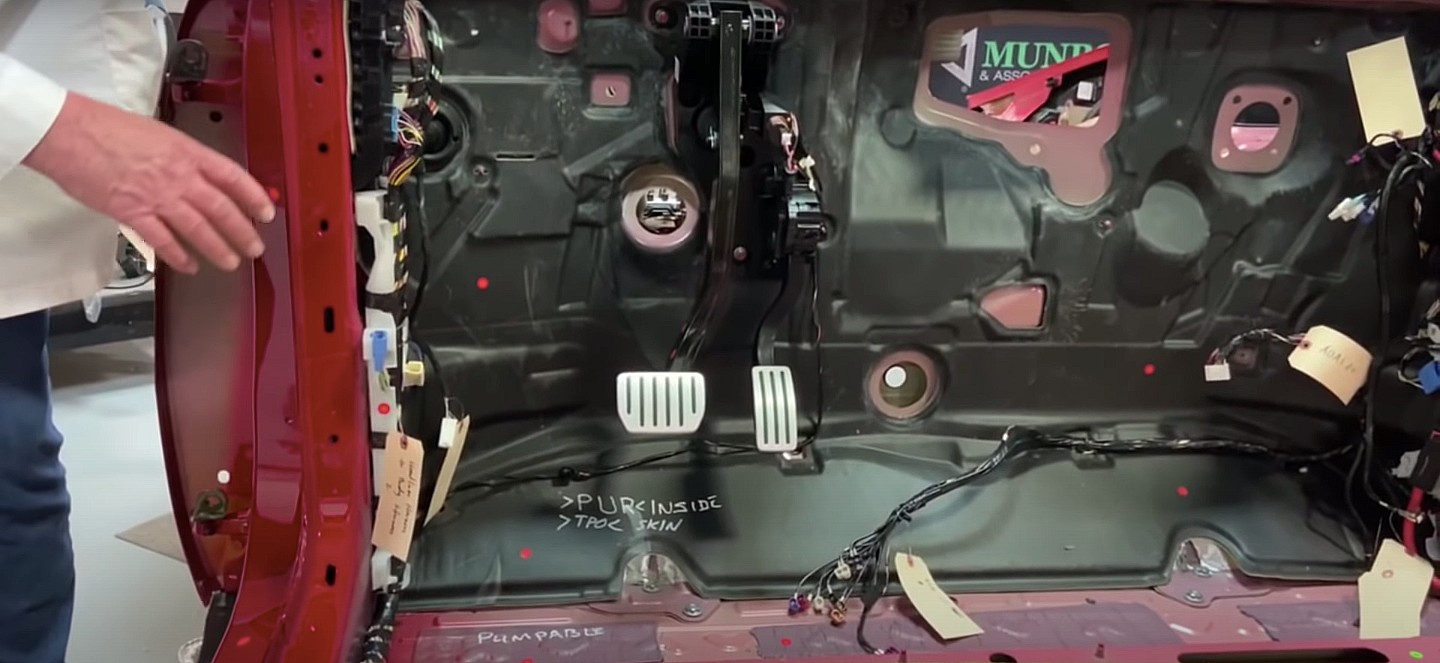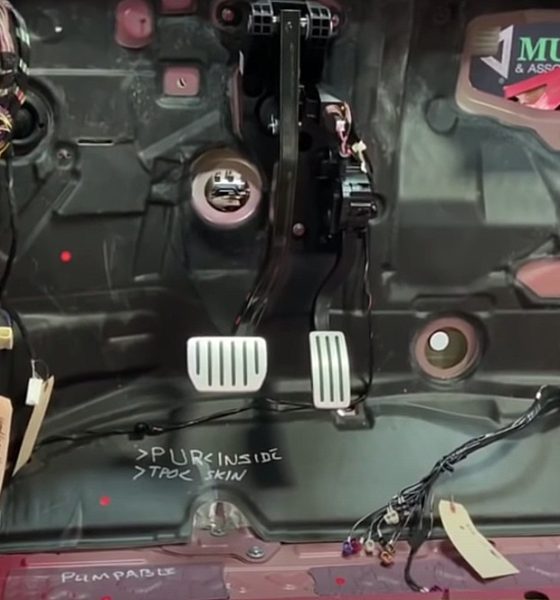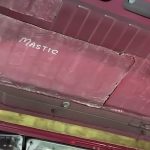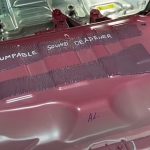

News
Tesla Model Y’s quiet cabin is a subtle, critical selling point for all EV buyers
When Tesla unveiled the Model 3 in the summer of 2017, the company had released its first affordable vehicle. The Model 3 had numerous selling points, though some first production vehicles were reported to exhibit a lot of road noise inside the cabin, especially at high speeds.
Model 3 owners looked for any number of ways to reduce the noise. These included aftermarket door seals, tire foam insulation, and other modifications. Later builds of the vehicle displayed an improved noise reduction system, as CEO Elon Musk had noted in October 2019 that cabin noise had been “significantly improved in current production” of the Model 3.
In a recent episode of Sandy Munro’s extensive Model Y teardown series, the automotive veteran took a look at the numerous improvements Tesla made to its electric crossover. While the Model Y is not a sedan like the Model 3, the two vehicles are effectively siblings as they share 75% of the same parts.
Tesla adopted several new strategies to keep the Model Y’s cabin quiet. According to Munro, the outer portion of the vehicle’s firewall was covered by a mat made of “lofted fiberglass.” Fiberglass is an excellent insulating material that is used within residential buildings and houses to maintain temperature. However, it is also useful for reducing sound due to its thick and dense nature.
The inside of the firewall, which faces inward toward the vehicle’s cabin is quite different. Tesla used polyurethane (PUR) and Thermoplastic Polyolefin (TPO). PUR is a material commonly used when soundproofing rooms and is usually shaped like an egg carton to deaden sound waves. TPO is traditionally utilized for roofing and uses a mixture of rubber, talc, glass, carbon fiber, and other materials to insulate heat and sound. It is also used to reduce cabin noise in cars, as its flexible nature allows it to be conformed to the twists and turns of a vehicle’s body.
Additionally, Tesla opted to use a series of pumpable and mastic sound deadener strips throughout the floorboard of the Model Y. These two materials can remove vibrations from the vehicle by stiffening the areas in the Model Y’s frame that are prone to excessive vibration. Both the pumpable and mastic sound deadeners were more frequently placed in the rear portion of the vehicle, where noise and vibrations are especially potent.
- Tesla Model Y Mastic Strip (Credit: MunroLive on YouTube)
- Tesla Model Y Pumpable Sound Deadener (Credit: MunroLive on YouTube)
Tesla’s installation of these elements provided a much quieter ride for passengers and drivers. Long drives on highways at speeds of 55 MPH or more can prove to be some of the noisiest driving conditions, regardless of whether one is driving an EV or a petrol-powered car. This is due to wind, tire friction with the road, and outdoor weather conditions. These noises are easier to notice in an electric car, since the lack of a working internal combustion engine pretty much amplifies other noises in the cabin.
Tesla seems to have set out to make the Model Y its quietest car yet, and it seems to have succeeded. This is reflected in the feedback of some Model 3 owners, such as YouTube host Brian Jenkins, who recently posted a video documenting his favorite features of the Model Y after 1,200 miles of driving. Jenkins notes the Model Y’s quiet ride is one of his favorite features. He added that he expected more cabin noise, but the Model Y’s cabin remained quiet. Prior to getting a Model Y, Jenkins drove a Model 3 that he fitted with noise reduction seals.
Interestingly enough, Tesla has released Joe Mode last year, a feature that reduces the audible alerts in the vehicle’s rear to prevent kids from waking up during nighttime trips. Coupled with the Model Y’s already-quiet cabin, features like Joe Mode will be extra effective. It can even be an additional selling point for the vehicle. Every parent out there who has attempted long road trips with kids would attest to the importance of a quiet cabin when the kids are asleep, after all.
Watch Sandy Munro’s breakdown of the Model Y’s cabin noise reduction below.

News
Tesla FSD fleet is nearing 7 billion total miles, including 2.5 billion city miles
As can be seen on Tesla’s official FSD webpage, vehicles equipped with the system have now navigated over 6.99 billion miles.

Tesla’s Full Self-Driving (Supervised) fleet is closing in on almost 7 billion total miles driven, as per data posted by the company on its official FSD webpage.
These figures hint at the massive scale of data fueling Tesla’s rapid FSD improvements, which have been quite notable as of late.
FSD mileage milestones
As can be seen on Tesla’s official FSD webpage, vehicles equipped with the system have now navigated over 6.99 billion miles. Tesla owner and avid FSD tester Whole Mars Catalog also shared a screenshot indicating that from the nearly 7 billion miles traveled by the FSD fleet, more than 2.5 billion miles were driven inside cities.
City miles are particularly valuable for complex urban scenarios like unprotected turns, pedestrian interactions, and traffic lights. This is also the difference-maker for FSD, as only complex solutions, such as Waymo’s self-driving taxis, operate similarly on inner-city streets. And even then, incidents such as the San Francisco blackouts have proven challenging for sensor-rich vehicles like Waymos.
Tesla’s data edge
Tesla has a number of advantages in the autonomous vehicle sector, one of which is the size of its fleet and the number of vehicles training FSD on real-world roads. Tesla’s nearly 7 billion FSD miles then allow the company to roll out updates that make its vehicles behave like they are being driven by experienced drivers, even if they are operating on their own.
So notable are Tesla’s improvements to FSD that NVIDIA Director of Robotics Jim Fan, after experiencing FSD v14, noted that the system is the first AI that passes what he described as a “Physical Turing Test.”
“Despite knowing exactly how robot learning works, I still find it magical watching the steering wheel turn by itself. First it feels surreal, next it becomes routine. Then, like the smartphone, taking it away actively hurts. This is how humanity gets rewired and glued to god-like technologies,” Fan wrote in a post on X.
News
Tesla starts showing how FSD will change lives in Europe
Local officials tested the system on narrow country roads and were impressed by FSD’s smooth, human-like driving, with some calling the service a game-changer for everyday life in areas that are far from urban centers.

Tesla has launched Europe’s first public shuttle service using Full Self-Driving (Supervised) in the rural Eifelkreis Bitburg-Prüm region of Germany, demonstrating how the technology can restore independence and mobility for people who struggle with limited transport options.
Local officials tested the system on narrow country roads and were impressed by FSD’s smooth, human-like driving, with some calling the service a game-changer for everyday life in areas that are far from urban centers.
Officials see real impact on rural residents
Arzfeld Mayor Johannes Kuhl and District Administrator Andreas Kruppert personally tested the Tesla shuttle service. This allowed them to see just how well FSD navigated winding lanes and rural roads confidently. Kruppert said, “Autonomous driving sounds like science fiction to many, but we simply see here that it works totally well in rural regions too.” Kuhl, for his part, also noted that FSD “feels like a very experienced driver.”
The pilot complements the area’s “Citizen Bus” program, which provides on-demand rides for elderly residents who can no longer drive themselves. Tesla Europe shared a video of a demonstration of the service, highlighting how FSD gives people their freedom back, even in places where public transport is not as prevalent.
What the Ministry for Economic Affairs and Transport says
Rhineland-Palatinate’s Minister Daniela Schmitt supported the project, praising the collaboration that made this “first of its kind in Europe” possible. As per the ministry, the rural rollout for the service shows FSD’s potential beyond major cities, and it delivers tangible benefits like grocery runs, doctor visits, and social connections for isolated residents.
“Reliable and flexible mobility is especially vital in rural areas. With the launch of a shuttle service using self-driving vehicles (FSD supervised) by Tesla in the Eifelkreis Bitburg-Prüm, an innovative pilot project is now getting underway that complements local community bus services. It is the first project of its kind in Europe.
“The result is a real gain for rural mobility: greater accessibility, more flexibility and tangible benefits for everyday life. A strong signal for innovation, cooperation and future-oriented mobility beyond urban centers,” the ministry wrote in a LinkedIn post.
News
Tesla China quietly posts Robotaxi-related job listing
Tesla China is currently seeking a Low Voltage Electrical Engineer to work on circuit board design for the company’s autonomous vehicles.

Tesla has posted a new job listing in Shanghai explicitly tied to its Robotaxi program, fueling speculation that the company is preparing to launch its dedicated autonomous ride-hailing service in China.
As noted in the listing, Tesla China is currently seeking a Low Voltage Electrical Engineer to work on circuit board design for the company’s autonomous vehicles.
Robotaxi-specific role
The listing, which was shared on social media platform X by industry watcher @tslaming, suggested that Tesla China is looking to fill the role urgently. The job listing itself specifically mentions that the person hired for the role will be working on the Low Voltage Hardware team, which would design the circuit boards that would serve as the nervous system of the Robotaxi.
Key tasks for the role, as indicated in the job listing, include collaboration with PCB layout, firmware, mechanical, program management, and validation teams, among other responsibilities. The role is based in Shanghai.
China Robotaxi launch
China represents a massive potential market for robotaxis, with its dense urban centers and supportive policies in select cities. Tesla has limited permission to roll out FSD in the country, though despite this, its vehicles have been hailed as among the best in the market when it comes to autonomous features. So far, at least, it appears that China supports Tesla’s FSD and Robotaxi rollout.
This was hinted at in November, when Tesla brought the Cybercab to the 8th China International Import Expo (CIIE) in Shanghai, marking the first time that the autonomous two-seater was brought to the Asia-Pacific region. The vehicle, despite not having a release date in China, received a significant amount of interest among the event’s attendees.










